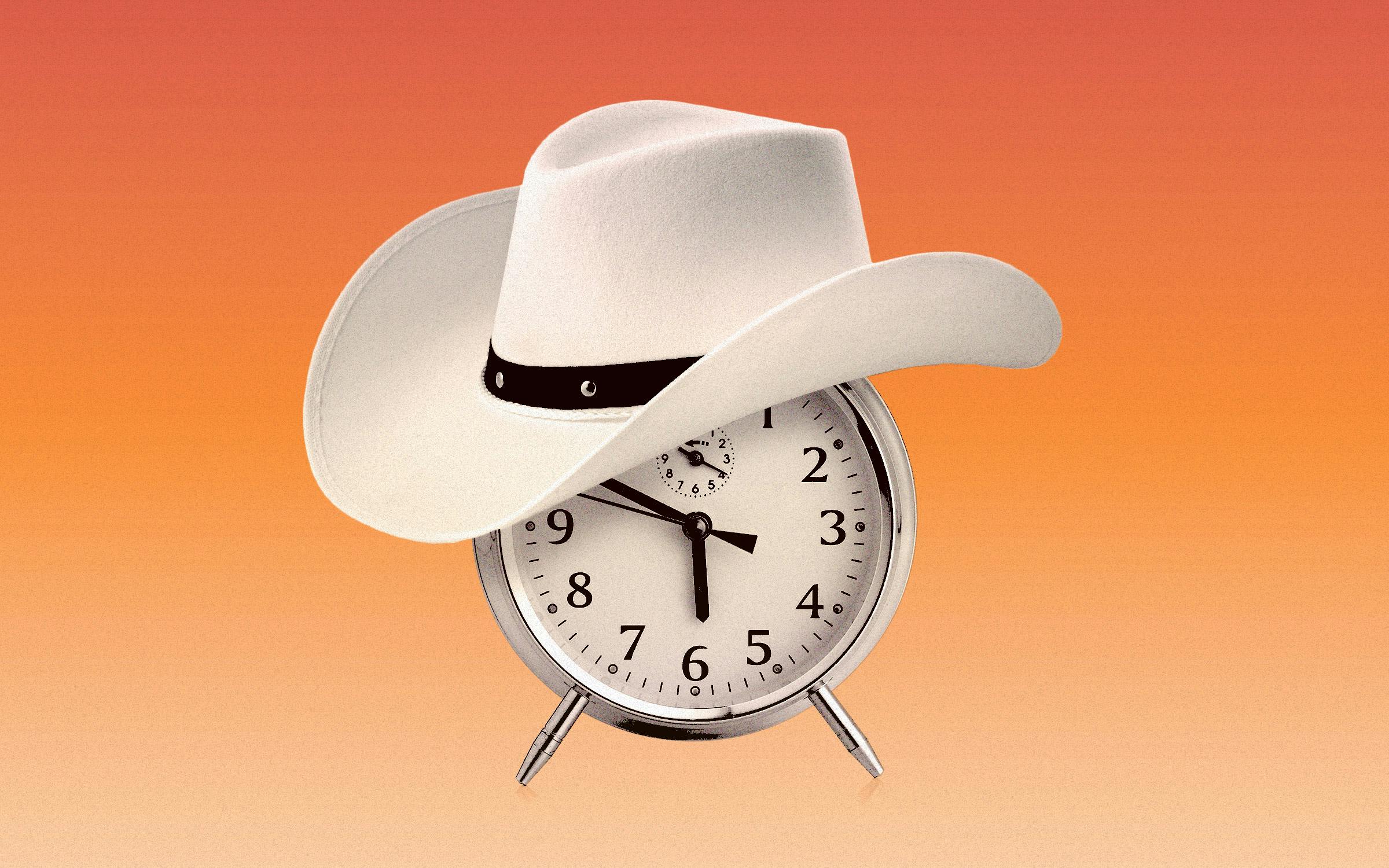This past weekend was one that most of us were dreading. At two o’clock in the morning on Sunday, our clocks rolled back an hour, and the day suddenly got shorter. The natural progression of the seasons, in which the sun gradually sets earlier each night, was upended, and the early onset of sunset happened all at once—as early as 5:13 p.m. in some parts of the state. It’s a disorienting and confusing adjustment, and most Americans loathe it: According to a 2022 CBS–YouGov poll, nearly 80 percent of the country wants to stop changing the clocks each November and then again in March.
Frustration over the time switch led the state’s agriculture commissioner, Sid Miller, to declare in a social media post that “Texas can end this nonsense next session.” He’s not wrong—but the cure, in this case, would be worse than the disease.
The problem is that Texas can’t really end daylight saving time; it can only choose to stop participating in it, which comes with its own frustrations. The rest of the country—except for Arizona and Hawaii, who’ve long opted out—will still change its clocks twice a year. The question isn’t “Should Texas remain on daylight saving time or not?,” but rather, “Should Texas be on mountain time for part of the year?” (El Paso and Hudspeth Counties, as well as part of Culberson County, which are on the western edge of the state and contain less than 3 percent of the state’s population, are already on mountain time. For the sake of simplicity, we will note this and then move on.)
This is how choosing not to participate in daylight saving time would work in practice: From mid-March to early November, Texans would live in the central time zone, the greatest of all time zones, while the first weekend of November would herald the switch to mountain time. This would be no less inconvenient than adjusting our own clocks, and no less confusing. For weeks one through eight of the NFL season, for example, the first slate of early games would kick off at eleven o’clock in the morning; under the proposed switch, the remainder of the season’s games would start at noon instead. If you have a friend in Florida and you schedule a FaceTime hangout at seven o’clock in Texas, your pal will have to check the calendar, recall our state’s refusal to participate in the daylight saving system, and remember that mountain time exists in order to know when to call. Over time, these changes will prove as annoying as the ones with which we must currently contend.
How do I know this? Because I was born in the state of Indiana, which—owing to its large population of farmers, with whom the time change was and remains unpopular—largely declined to participate in daylight saving time for many decades; a 1949 battle in the state legislature over whether to participate led to “mayhem on the floor” between lawmakers from the cities, who preferred to sync up with their counterparts around the country, and those who represented farmers in rural areas, who declared daylight saving time “unhealthy for cows.” Ultimately, the matter was settled when a filibuster from an urban lawmaker was thwarted by a state representative from an agricultural area, who accidentally broke the chamber’s clock while resetting it by hand as the opposing lawmaker spoke.
And thus, Hoosiers straddled time zones rather than adjusting their clocks. This remained popular with farmers, whose cows were not spooked by man forcing his will onto a force as primordial as time itself, but continued to frustrate the state’s city dwellers. Finally, in 2004, Republican gubernatorial candidate Mitch Daniels unseated a popular incumbent governor on a campaign that promised to finally bring Indiana into line with the rest of the country—which Daniels did, in 2006. The law remains popular with city folk and is widely detested by their rural counterparts. (In Arizona, where remaining on standard time has addressed the statewide problem of long summer days with soaring temperatures since the 1960s, the issue is less divisive).
This partly explains why Sid Miller, the Stephenville-based agriculture commissioner, favors the simple solution of ending Texas’s participation in daylight saving time through legislation—for the Texans whose interests he is most keenly aligned with, being out of sync with New York and Los Angeles means very little. For most city-dwelling Texans, however, the change would bring frequent frustrations, especially as they learned to adjust to the new conditions.
Texas lawmakers have long discussed opting out of daylight saving time. In 2015, state representative Dan Flynn, a Republican from East Texas, introduced legislation that would have stopped us from changing our clocks; the bill was even amended to call the proposed standard Texas Time. It ultimately failed, 56 yeas to 79 nays.
In the 2023 legislative session, the House succeeded in passing a bill that would have placed Texas on permanent daylight saving time—meaning that we would spend much of the year in the central time zone and then switch to eastern time in the fall—but the bill died in committee in the Senate. Had it succeeded, however, it wouldn’t have mattered. Federal law allows states to opt out of daylight saving time, but it doesn’t permit them to enjoy longer days year-round simply by voting to do so.
What remains is an intractable problem: No one likes changing their clocks, but to avoid the pitfalls of leaving states to randomly shift their time zones rather than their clocks, the nation must act together. But even deciding whether to put the country on permanent daylight saving time or permanent standard time is a complicated matter. A relatively small plurality of Americans would prefer the former, but experts who have studied the matter have consistently found that the latter leads to better health outcomes. Sid Miller is correct in identifying the problem—but, alas, there’s not a solution that seems to work for everyone.

